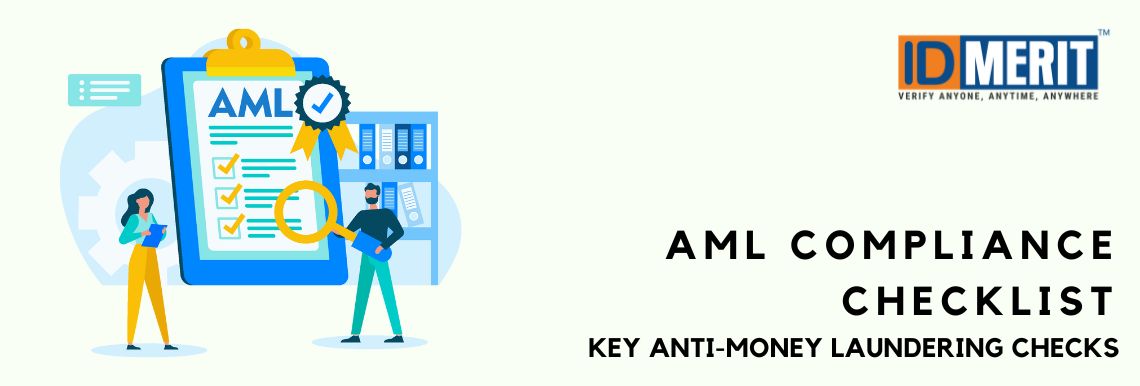With financial crimes and money laundering activities on the rise, the need for robust anti money laundering measures cannot be overstated. In preventing financial crimes and money laundering activities, ensuring compliance with regulatory requirements, as well as protecting their operations, effective anti money laundering checks are vital. Their responsibilities cover a wide range of financial issues while protecting and improving the financial landscape.
The objective of this article is to guide businesses in establishing an effective anti money laundering checklist to strengthen their financial defences. We will also discuss what is considered as AML compliance basics. In order to understand how AML compliance solutions harmonise these processes, we will take a look at some of the elements that define an efficient AML checklist.
What Is Anti Money Laundering Compliance?
The concept of Anti Money Laundering Compliance involves laws, regulations, and procedures that are intended to prevent criminals from converting illegally obtained funds into legal income.
Regulatory requirements require financial institutions and other regulated entities to monitor customer transactions and report suspicious activity. The AML compliance program plays a crucial role in detecting and preventing money laundering, terrorist financing, fraud, and other financial crimes. Customer due diligence, transaction monitoring, and suspicious activity reporting are some of these measures.

The Importance of Anti Money Laundering Compliance
AML compliance plays a crucial part in shielding the money related framework and the broader economy from the dangers posed by cash washing and related criminal exercises. By implementing effective AML measures, institutions can:
- Protect the Economy: By abetting criminal activities such as smuggling, terrorism and official corruption, money laundering compromises the integrity of financial markets which in turn can destabilise economies.
- Safeguard Reputation: Financial institutions cherish their reputations highly. In addition to damaging reputation significantly and eroding customer confidence, Non-compliance with AML regulations might result in loss of business.
- Avoid Legal Consequences: Breaching AML rules may lead to severe fines, penalties or sentences imposed on individuals and organisations. These days billions of dollars’ worth of charges have been paid out by global regulators as part of enforcement actions.
- Prevent Fraud: By doing so, these programs protect against fraud including due diligence and transaction monitoring. This way both the institution and its customers are safeguarded.
- Maintain Integrity of Financial System: Compliance to AML safeguards the public trust within financial institutions by halting potential use of the financial system for criminal purposes.
Key Components of an Effective AML Compliance Checklist
There are several key components of an effective AML compliance checklist. This includes:
Client Identification
To begin with; AML guidelines hold that one should undertake client identification. This process is supposed to give details of a person’s full name, a photograph on an official document confirming their identity, and the date of birth and residential address. At this stage, financial institutions can now know exactly who they are dealing with resulting in a secure business relationship.
Beneficial Ownership Verification
It is not enough to just identify the direct client but also the beneficial owner(s) who ultimately own or control the customer or are the parties on whose behalf a transaction is conducted.
Verification Process
The structure of ownership for companies, partnerships or trusts needs to be established in order to identify significant shareholders or persons with substantial control.
Risk Assessment and Management
Financial institutions shall consider potential risks when initiating new business relationships as well as understanding customer purpose, source of fund, transaction purpose etc. It should be done regularly so as to ensure that changes in ownership structure/or business activity are well reflected in customer information.
Ongoing Monitoring for Suspicious Transactions
Money laundering activities can be identified and prevented by monitoring customer transactions for inconsistencies with their profiles, applying enhanced scrutiny to high-risk countries and sectors, and examining transactions exceeding a specific monetary threshold closely.
Record Keeping and Reporting
Maintain meticulous records of all customer due diligence measures, including identification documents, risk assessments, and audit trails of transactions. Additionally, institutions must report any suspicious activities to ensure a robust defence against potential financial crimes.
Conclusion
Throughout the exploration of essential anti money laundering (AML) checks and compliance strategies, it is clear that robust AML protocols are the backbone of safeguarding the financial industry from illicit activities. The emphasis on technology, coupled with the unwavering commitment of every organisational member to uphold AML standards, marks a significant stride towards mitigating the risks associated with money laundering and related offences.
Having a comprehensive and coherent anti money laundering compliance checklist not only aligns with legal and regulatory obligations, but also enhances financial ecosystem integrity and stability. By prioritising these elements, organisations not only protect themselves against the ramifications of non-compliance but also contribute to a more secure, transparent, and trustworthy global financial landscape.



